#7th century BCE
Text
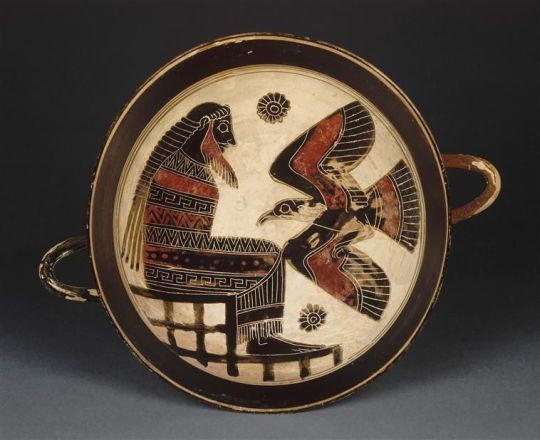
Lakonian kylix featuring Prometheos and his friend, the Eagle.
The hair - facial and head - is so quintessentially Spartan, it’s not funny. And he has his braids in a braid, right? That’s what’s going on back there? Like a super-braid.
Saw this called a Spartan king somewhere along the way. Think that might be a bit of a push, but I do like the idea that some perioikic craftsman was like - ‘Y’know, if I could depict anyone having their liver pecked out on the daily, you know who I’d choose…’
Anyway - This is 7th Century Lakonianware (from before the great cultural shift).
#ancient sparta#ancient greece#lakedaimon#7th Century BCE#spartan hairstyles#sparta#ancient history#greek history#spartan history#ancient greek history#greek mythology#prometheus
292 notes
·
View notes
Text


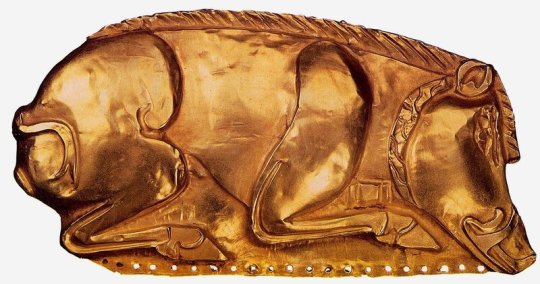
Scythian sword with boar plaque decoration 7th-4th C. BCE. Barrow near Oleksandrivka village, Dnipropetrovsk Oblast. The Museum of Historical Treasures of Ukraine, Kiev.
#scythian#scythian gold#sword#swords#scabbard#art#ancient art#ancient#antiquities#antiquity#museums#artifacts#7th century bce#4th century bce
577 notes
·
View notes
Text

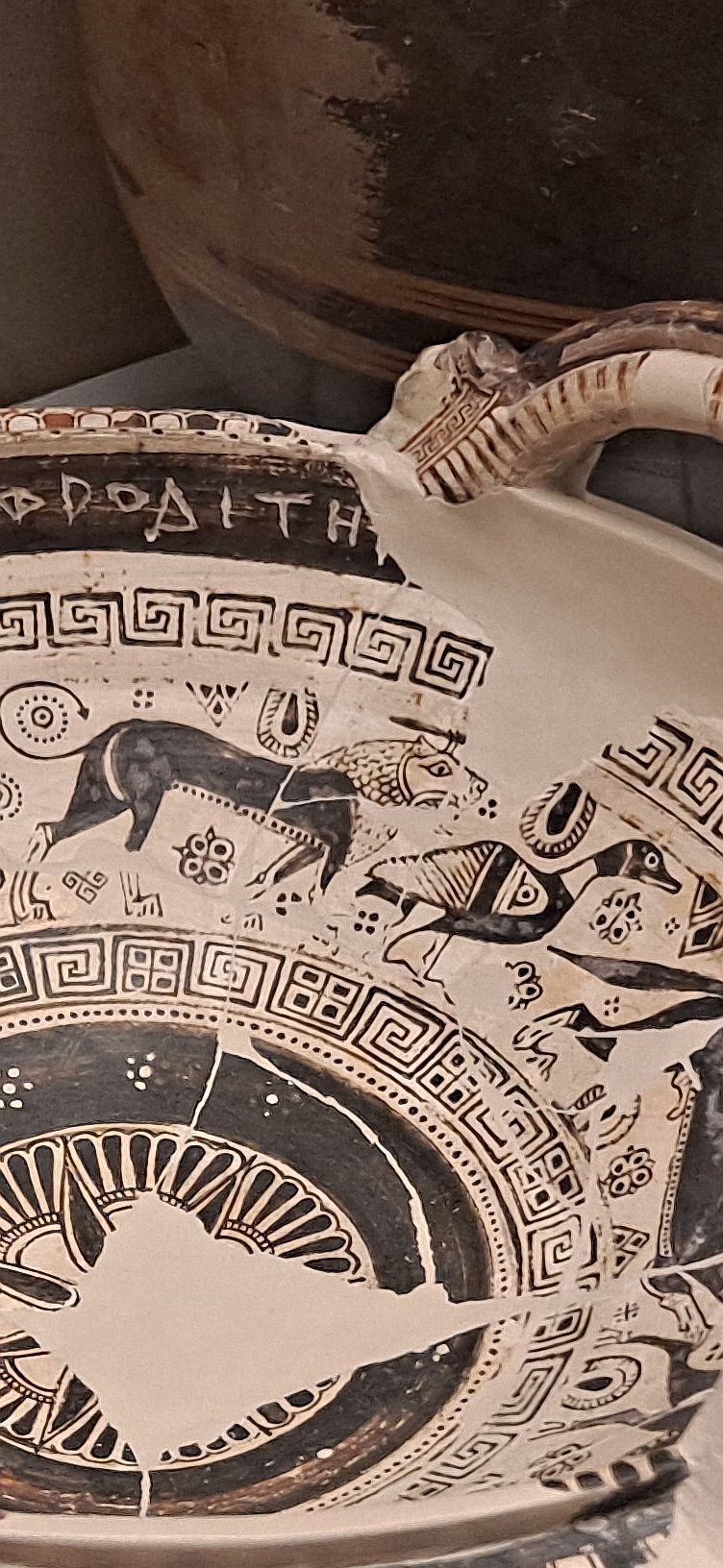
Greek birds and other animals
* 620-620 BCE
* Sanctuary of Aphrodite, Naukratis
* British Museum
* London, July 2022
139 notes
·
View notes
Photo
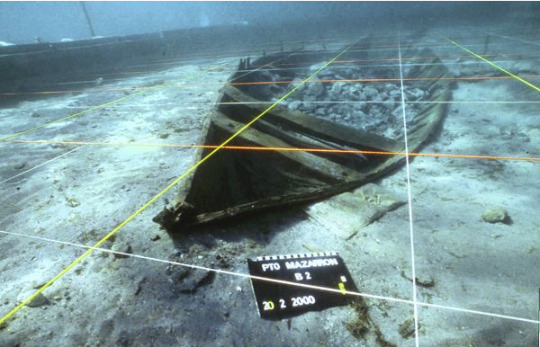
A Phoenician wreck at Mazarrón, off the coast of Spain, excavated 1995
This wreck is known as Mazarrón II as was a Merchant Vessel, it dates back to the 7th century BCE. The vessel itself measures 8.15 metres in length and 2.25 metres in width and it was made of cypress, pine, olive and fig tree wood.
The artefacts were recovered, but the wreck itself was sealed under a steel box. It is inspected regularly and in 2008 a mistake was made and the box was not closed properly. As a result, the wreck has suffered extensive damage and now appears to be disintegrating. The responsible archaeologists are still trying to get permission to salvage it, but to no avail. But there is not much time left to save it, so an urgent application has been made this year. Perhaps this will now be granted and the wreck can be salvaged.
46 notes
·
View notes
Note
What's your PhD about?
I haven't started it yet cause I'm looking for funding first so this might change (also I've altered the PhD propossal depending on the professor that would be my supervisor) but basically I want to study the Muses through the lens of Cultural Memory.
The ideal thing would be to study them and their evolution throughout ancient Greece, but that's impossible so for example my current PhD director suggested I should focus on the Archaic Era (also the Dark Ages, so around the 10th to 6th centuries BCE more or less). I am very interested in the relationship between identity, literacy, and religiosity, so the Muses are perfect for it, as they were used by the Greeks as a sort of fact-check for aoidoi and poets, which were the preservers of Cultural Memory.
Most stuff that's been written about the Muses has always been very philological and especially related to the 'invocation of the Muses' so prevalent in Greek literature. I want to open the scope to new angles, something never done before, and I have experience working with Cultural Memory from my Master's Thesis, so I thought it would be a cool approach :) It's gonna be much more theoretical than you would expect, but I love that sorta thing. Also it's impossible to separate the Muses from literacy so I'll be looking at written sources for sure, my good pal Hesiod (whom my Undergrad Thesis was about) will occupy a good chunk of the research I'm afraid.
So yeah, that's it. This won't happen if I don't get funding tho, so I could just never write this Ph.D. Who knows.
#ask#sorry for the lengthy answer anon i've had to write so many phd proposals in the past few months i just go with the autopilot#i hope it's comprehensive enough. and please feel free to ask more questions!! i am very passionate about this so i would love#to answer more stuff like this :)#i'm currently researching my second master's thesis btw#it's gonna be about the cult of the muses in thespiai#so a bit of context#the heliconian muses (which are like the 'canon' muses; the ones described by hesiod) 'originated' around helicon mt#this is a real place in boeotia greece#the valley of this mountain is the valley of the muses. hesiod lived right there#in ascra.#ascra at some point was conquered by the city of thespiai. and it was part of it for the rest of ancient greece#(this happened very early on btw. like probably 8th or 7th century)#there was a sanctuary of the muses built in the vale#and this agonic competition (like a music festival) took place there called mouseia#it became incredibly important#but the thing is. this all happened in the hellenistic era (so 2nd - 1st centuries BCE)#there is barely any evidence of anything muses related in thespiai before that#noticeably it was in the hellenistic era when hesiod really became famous#so i want to study the evolution of the cult of the muses in thespiai; the evidence (or lack thereof) for it; and its instrumentalization#by thespiai#i'll mostly do it through epigraphy cause 1) it's the source i'm most comfortable with and 2) there's not really much else#i'll also sprinkle in cultural memory and some heavy theoretical stuff in there just for fun#so yeah i'm having fun with it :) hopefully i'll finish it by october!
8 notes
·
View notes
Text
I am experiencing some agonizing emotions and disillusionment but at least I'm pretty and my hair is very soft rn.
#personal#at least i have my looks#i may be falling apart#but at least im beautiful and have a nice ass#brb gotta fanticize dying as a peasant in the 7th century bce and getting a lavish burial because i had so many wealthy suitors#you know#as a coping skill
3 notes
·
View notes
Photo
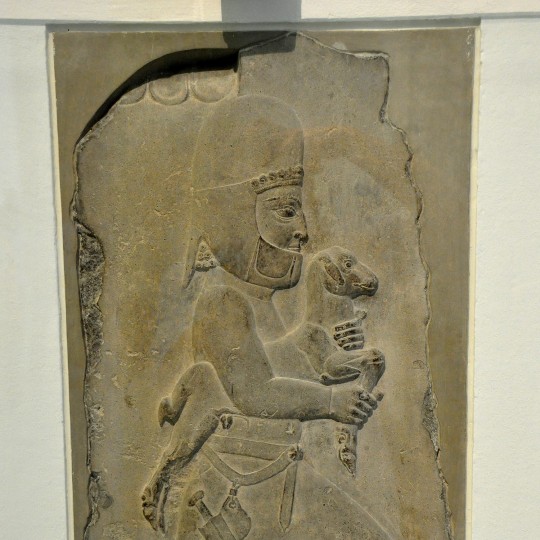
Medes
The Medes or Medians were a group of Indo-Iranian-speaking people from central Asia who migrated westwards and entered northern Iran around the end of the 2nd millennium BCE. They settled in the highlands of Zagros (Zagreus in Greek) and, by the end of the 7th century BCE, founded the kingdom of Media (Mada in Old Persian).
Continue reading...
161 notes
·
View notes
Photo

Unknown, Sacred Cat of Bast, between 7th and 6th century BCE
639 notes
·
View notes
Text


Lead figurines of the winged Artemis Orthia
Archaic Greek, Laconian, dated to 7th–6th century BCE
#mother is mothering#ancient greece#hellenism#greek polytheism#archaeology#polytheism#artemis#greek gods#greek pantheon
541 notes
·
View notes
Text
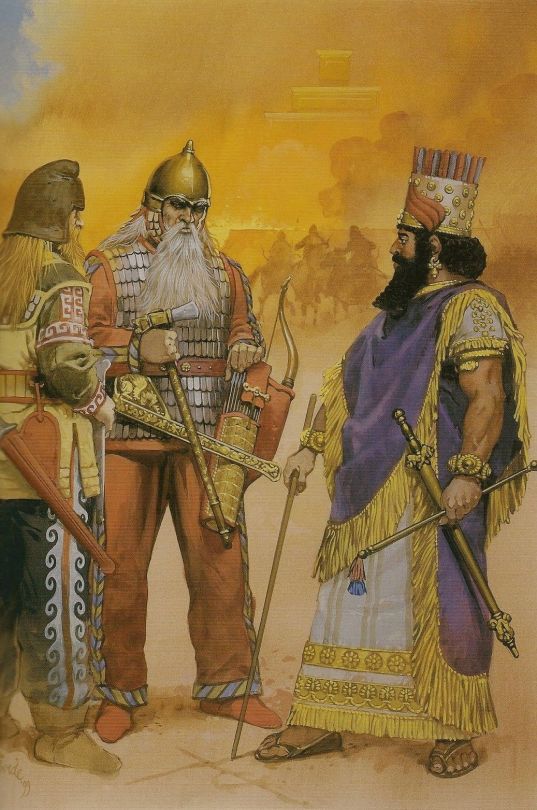
Nabopolassar, king of Babylon, and the king of Scythia at the fall of Nineveh, 612 BCE by Angus McBride
"The Scythians make their first major appearance in the fertile crescent during the 7th and 6th centuries BCE. It is during this time that the nomadic horse archers engage the region’s strongest power up to that date, the Neo Assyrian Empire under Esarhaddon. Presumably, after the Scythians engaged and defeated the Assyrians in a skirmish, Esarhaddon agreed to marry his daughter to the Scythian Chieftain Partatua (whose name meant "with far-reaching strength.") Bartatua was the successor of the previous Scythian king, Išpakaia, and might have been his son. After Išpakaia had attacked the Neo-Assyrian Empire and died in battle against the Assyrian king Esarhaddon around 676 BCE, Bartatua succeeded him. After this event, the Scythians continued to engage in continuous raids throughout the Near East, from Palestine to Egypt. Eventually, the Scythians took part in the biblical event that was the end of the Neo Assyrian Empire, contributing to the sack of Nineveh.
Both in terms of culture and military, the Scythians would have been a shock to the major powers of the time, the Babylonians and Assyrians. Being a series of tribal confederations rather than a concrete nation with cities, any form of retaliation against the Scythians would be nearly impossible (as Cyrus the Great would later find out). The Scythians, being nomads, would attack swiftly with their infamous horse archers, using well-crafted composite bows. The Scythians would then finish the job with heavy cavalry covered in metal scales, which would no doubt be a shock to the Semitic peoples of the Middle East, used to encountering heavy infantry, archers and chariots of Assyria and Egypt.
The presence of women within Scythian society would have been even more of a shock to the states of the Middle East. The Scythians, and particularly their relatives, Sarmatians were famous for their fierce warrior women. In Scythian armies, women were expected to fight alongside their men on horseback. This gave rise to the mythological “Amazons” who indeed had a basis in historical reality. Archaeology confirms this, as many Scythian women are buried with weapons.
The Scythians also took part in the greater economic cultural exchange of the Middle East. Besides trading their prestigious bows, Scythian art appears to be found in Middle Eastern cities such as Urartu and Middle Eastern bowls and jewelry appear in Scythian graves as well. It is even theorized that after seeing Middle Eastern art, the Scythians blended it with their own art style, resulting in the Scythian “animal style” of art, for which the Scythians are famous. The Middle Eastern art adopted by the Scythians would then be spread all over the Middle East and Europe as well. Imagery depicting animals and the hunting of various beasts is thought to have been a product of this cultural exchange, adding to the brilliant craftsmanship of the Scythians."
-taken from arabamerica and wikipedia
#scythian#nabopolassar#art#babylonian#nineveh#assyrian#ancient history#history#pagan#paganism#angus mcbride#7th century bce
221 notes
·
View notes
Text
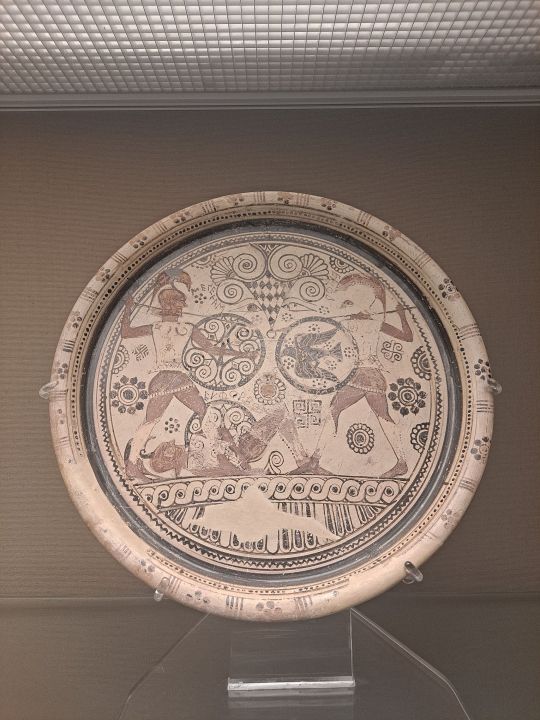
Plate showing Menelaos and Hektor fighting over the body of Euphorbos
* Rhodes, about 600 BCE
* Findspot: Kamiros, Rhodes
* British Museum
London, July 2022
#Hector#Menelaos#Euphorbos#Trojan war#Iliad#Greek warrior#ancient#Greek#art#plate#Rhodes#7th century BCE#6th century BCE#British Museum#my photo
139 notes
·
View notes
Text

We're so used to referring to Apollo and Artemis as Divine Twins, but did you know that the earliest known Ancient Greek sources do not explicitly denote the two as being twins?
That isn't to say one text depicting a myth is more correct than the other - but I so rarely see mentions of Apollo and Artemis as not twins that I find it all the more dear.
There is beauty in Solar and Lunar twins - but I also see the same beauty in siblings who are not predetermined to be each other's mirror by the fact of birth.
The first mention of Apollo's name in the Ancient Greek texts is in the Homeric Hymn to Apollo (3), trans. by Hugh G. Evelyn-White:

Here's a link to the original.
They are not explicitly called twins and They have different birthplaces: Apollo's birthplace is Delos, Cyclades - Artemis is born in a place named Ortygia. It should be stated that only Apollo's birth is given any sort of detail, and it is unclear where Ortygia was.
Ortygia (center of modern Syracuse named after the Greek word for quail) in Sicily has been known to Greek colonizers since around the 8th century BCE, Homeric Hymns date to approximately the 7th-6th century BCE. It's possible that Artemis was born there. In this case, the locations are separated by the Ionian sea and a large part of Greece. Delos is a small island to the North from Naxos and right at the Southern ridge of Mykonos, Ortygia in Italy is the Eastern part of Sicily:
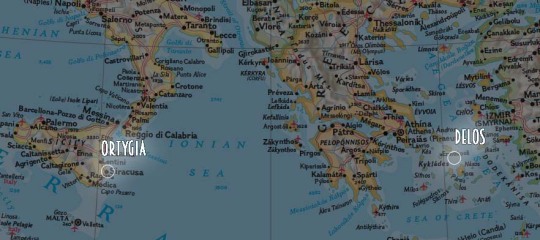
Ortygia could also be attributed to a large number of other places. Strabo (63 BCE - 24 AD) in his Geography (10.5.5) stated that Ortygia is but an old name for Delos or for Rheneia, a small island in the Cyclades:
Rheneia is a desert isle within four stadia from Delos, and there the Delians bury their dead; for it is unlawful to bury, or even burn, a corpse in Delos itself, and it is unlawful even to keep a dog there. In earlier times it was called Ortygia.
Though earlier in the same book (6.2.4) he argues that Ortygia might also be in Sicily. He gives a detailed explanation of what we now know as the Old Town of Syracuse:
Ortygia is connected with the mainland, near which it lies, by a bridge, and has the fountain of Arethusa, which sends forth a river that empties immediately into the sea.
— The Geography of Strabo, Books 1-5 translated by Hamilton and Falconer
Ortygia is also a placename attested to different parts of Greece. For example, in Homer's Odyssey (5.123), a much earlier text, Artemis kills Orion in Ortygia and the place is not anyhow noted to be connected to Delos:
<...> until in Ortygia chaste golden-throned Artemis
attacked with her painless darts and killed him.
— The Odyssey of Homer, translated by James E. Huddleston
Hymn to Apollo is not the only Ancient text predating any mention of "twins" that did not specify that the two were born at the same time. Hymn to Artemis (27) calls the Gods a brother and a sister while Hymn to Artemis (9) indicates that They were raised together (ὁμότροφον) without a notion of the circumstances of Their birth. Those are the earliest sources we know of, but there were many other authors and traditions that followed, some of which were:
Homer in the Iliad makes Them a son and a daughter of Leto
Hesiod mentions them being born from the same mother
Neither describe the two as twins.
Apollodorus in his Bibliotheca (1.4.1.) makes Artemis be a first-born so She serves as a midwife for Apollo
Plutarch in Pelopidas states that Apollo was born in Tegyra, Boeotia
Some later sources (Callimachus, Servius) consider Artemis to be first-born while some (Hyginius) do not specify on time of birth.
The first - and most prominent - author to speak of the Divine Twins is Pindar (518-438 BCE) in his Olympian odes (3.35), here he refers to Them as twins of Leda. At the same time, in the Nemean odes (1.1) he calls Ortygia in Sicily Artemis' birthplace and "sister to Delos" (might be metaphorical, as in sister-state). Orphic Hymn 35 to Leto (1st-3rd AD?) also calls Them twins.
It should probably also be noted that the cult of Artemis and the cult of Apollo are not always interconnected. While some locations (such as Delos and Ortygia, Sicily) have a history of implementing both Deities into the same votive tradition, some (Didyma, Claros) have worship of the Gods completely disconnected from each other. It is likely worth another post, but worship of Apollo didn't necessarily imply His sister, and vice versa.
With all of this being said, I do not believe that one version of the story is above another. And while I do find it fascinating - and logical - that the idea of Apollo and Artemis being twin-Deities has taken root, I do appreciate other, older and not, versions of the same legend.
#HISTORIA 📔#I have an insane aesthetic rule with golden text but. I hope you can see underlined text; those are all links.#greek mythology#greek gods#artemis#apollo#artemis deity
97 notes
·
View notes
Photo
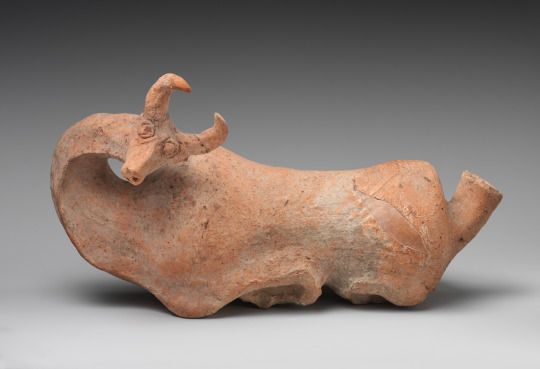
Jug in the form of a recumbent bull. ca. 7th–6th century BCE. Credit line: Rogers Fund, 1943 https://www.metmuseum.org/art/collection/search/323943
#aesthetic#art#abstract art#art museum#art history#The Metropolitan Museum of Art#museum#museum photography#museum aesthetic#dark academia
185 notes
·
View notes
Text



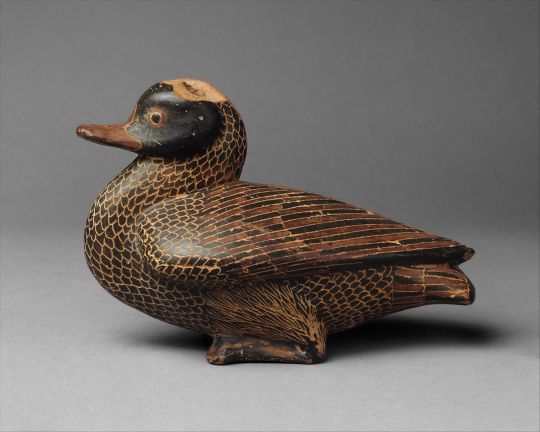


Terracotta askos (flask) in the form of a rooster, Etruscan 4th century BCE.
Heron-Shaped Figure Vase (Oil Vessel), East Greek, probably Milesian c. 580 BC
Protocorinthian terracotta vase in the form of a bird, mid-7th century BCE.
Archaic terracotta vase in the form of a duck, East-Greek mid-6th century BCE.
Terracotta askos (flask) in the form of a jackdaw, Etruscan 4th century BCE.
Swan Vase (perfume container), 575-550 BCE Greece, probably from Rhodes
367 notes
·
View notes
Text

A Rare 2,800-Year-Old Scarab Amulet Found in Israel
Antiquities Authority says recent winter rains helped expose buried antiquities, urges public to be aware and to turn over finds.
A rare scarab amulet from the First Temple period was recently discovered by a hiker in the Nahal Tabor Nature Reserve in the Lower Galilee and turned over to the Israel Antiquities Authority (IAA).
The scarab, made from reddish-brown carnelian stone, is estimated to be 2,800 years old and of Assyrian or Babylonian origin. The front is carved in the shape of a beetle, and the back has engravings that depict a griffon or a winged horse, a common motif of the Ancient Near East.
When he discovered the artifact, Erez Avrahamov, 45, was on a two-day leave from IDF reserve duty, taking advantage of a sunny day after recent rains.
“I saw something shimmering on the ground. At first, I thought it was a bead or an orange stone. After I picked it up, I realized it had engravings resembling a beetle. I called and reported the amazing find to the Antiquities Authority,” Avrahamov said, according to a Wednesday IAA press release.
Abrahamov found the scarab near the bottom of Tel Rekhesh, associated with the city of Anaharath mentioned in the Book of Joshua.
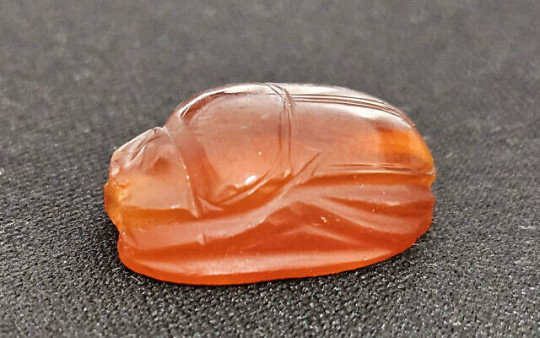

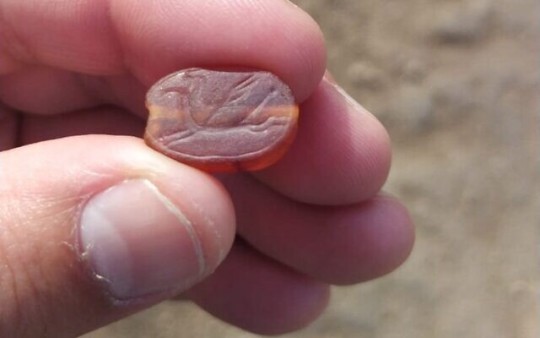
During the 6th-7th centuries BCE, “a large citadel stood at the top of the mount, where bathing facilities, halls and ritual chambers were found from the period of Assyrian rule. This rule, as we know, was responsible for the destruction of the Kingdom of Israel” in the First Temple period, IAA archaeologist Dr. Yitzhak Paz explained.
The scarab is likely from this period of Assyrian control and “may indicate the presence of Assyrian (or perhaps Babylonian) officials at Tel Rekhesh during this period,” Paz added. If the scarab can be conclusively dated and this connection proven, it will be a discovery of “great significance,” he said.
Scarab seals of a similar type, fashioned into a dung-beetle shape from a wide variety of stones, originated from Pharaonic Egyptian culture but were widely used throughout the ancient world.
The orange color and material of the scarab found by Abrahamov are fairly rare, the IAA said, as most were made from a softer bluish stone and then covered in glaze, which in almost all cases has worn away with time.
The IAA said it’s likely that the recent rains uncovered the scarab. “As in every winter, when the rainy season arrives, antiquities start to ‘float’ and rise to the surface,” IAA Director Eli Escusido said.
“I am imploring the public to obey the Antiquities Law, and request that if you come across an archaeological find, report it to the Antiquities Authority while in the field. The exact location where an object is found is extremely important… The special scarab will be stored in the state archive, where we can research and learn more about it,” he said.
Under Israeli law, any found man-made object dating from before 1700 is to be turned over to the authorities. Abrahamov received a good citizenship certificate for doing so.
By GAVRIEL FISKE.
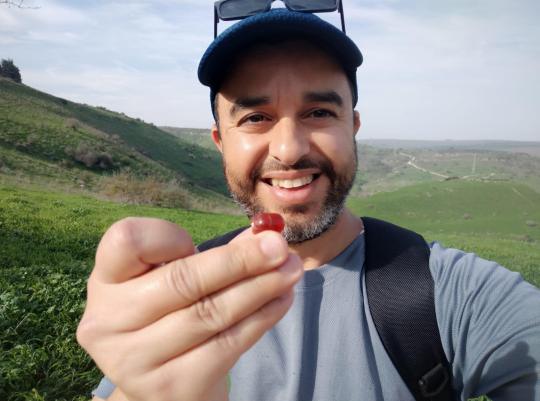
#A Rare 2800-Year-Old Scarab Amulet Found in Israel#Nahal Tabor Nature Reserve#First Temple period#carnelian stone#ancient artifacts#archeology#archeolgst#history#history news#ancient history#ancient culture#ancient civilizations#art#ancient art
81 notes
·
View notes
Text
I keep seeing a post going around saying that people should stop using the “colonized” names for cities in Israel/Palestine and should instead use the Arabic names.
I need you guys to be so for real right now, Hebrew is quite literally the indigenous language of the area. Like believe what you want about Israel, but Hebrew objectively and factually originated in that land. The earliest record of written Hebrew is the Khirbet Qeiyafa inscription, found near Beit Shemesh which dates back to the 11th-10th century BCE.
The first record of the name Jerusalem is in the Egyptian Execration Texts which date back to the 20th century BCE.
Arabic was introduced to the land in the 7th century CE. The first recorded use of “Al-Quds” was in the 9th century CE.
I could do this for every single ancient city in the land. Bethlehem, Hebron, Jericho, Jaffa, Beer Sheva, Acre, and Ashkelon all existed prior to the Arab conquests in the 7th century CE and the introduction of Arabic to the land.
The fact that we use the Hebrew names of these cities isn’t some conspiracy to make them sound “more Jewish”, the modern Hebrew names are direct descendants of the ancient Canaanite words for these places. Hebrew is the only surviving Canaanite language.
Believe what you want about Israel, but claiming that the Hebrew names for these cities are “colonial” names is a disgusting erasure of Jewish history in the land.
#israel#jews#jewish#hebrew#arabic#israel palestine conflict#palestine#I have a feeling I’m gonna get hate for this but honestly I had to say something#y’all are willingly spreading pan-Arabist propaganda
100 notes
·
View notes